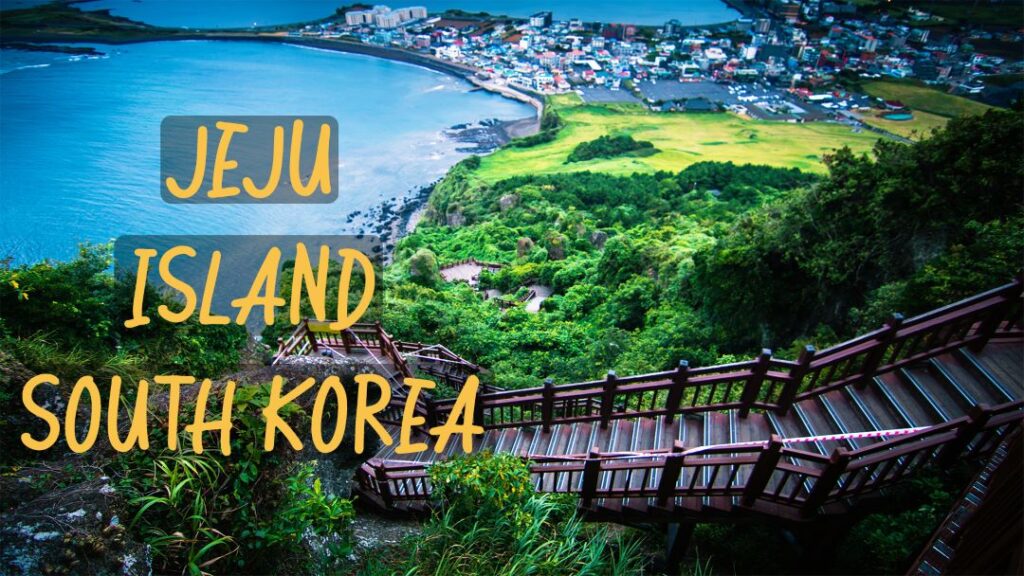Exploring Jeju Island, South Korea
Jeju Island, located off the southern coast of South Korea, is a popular destination known for its natural beauty and cultural richness. It’s often called the “Hawaii of Korea” due to its stunning landscapes, including volcanic craters, lush forests, and pristine beaches. Jeju is the largest island in South Korea and boasts a unique blend of tradition and modernity.
One of the main attractions on Jeju Island is Hallasan Mountain, a dormant volcano and the highest peak in South Korea. Hiking enthusiasts will find several trails that offer breathtaking views. Another must-see is Seongsan Ilchulbong, also known as Sunrise Peak, a UNESCO World Heritage site. This volcanic crater offers a spectacular sunrise view that is worth the early wake-up call.
Jeju Island is also home to many beautiful beaches such as Hamdeok Beach and Hyeopjae Beach, where visitors can relax, swim, and enjoy water sports. The island’s coastline is dotted with picturesque cliffs and lava tubes, providing perfect spots for sightseeing and photography.
For those interested in culture, the Jeju Folk Village Museum offers a glimpse into the traditional lifestyle of Jeju’s residents. Visitors can explore old-style houses, learn about local customs, and watch traditional performances. The island is also famous for its unique cuisine, featuring dishes like black pork barbecue and fresh seafood.
Jeju Island has something for everyone, from nature lovers and adventurers to culture enthusiasts and foodies. Its mild climate makes it a year-round destination, though spring and autumn are particularly pleasant times to visit.
How to Spend Time in Jeju Island?
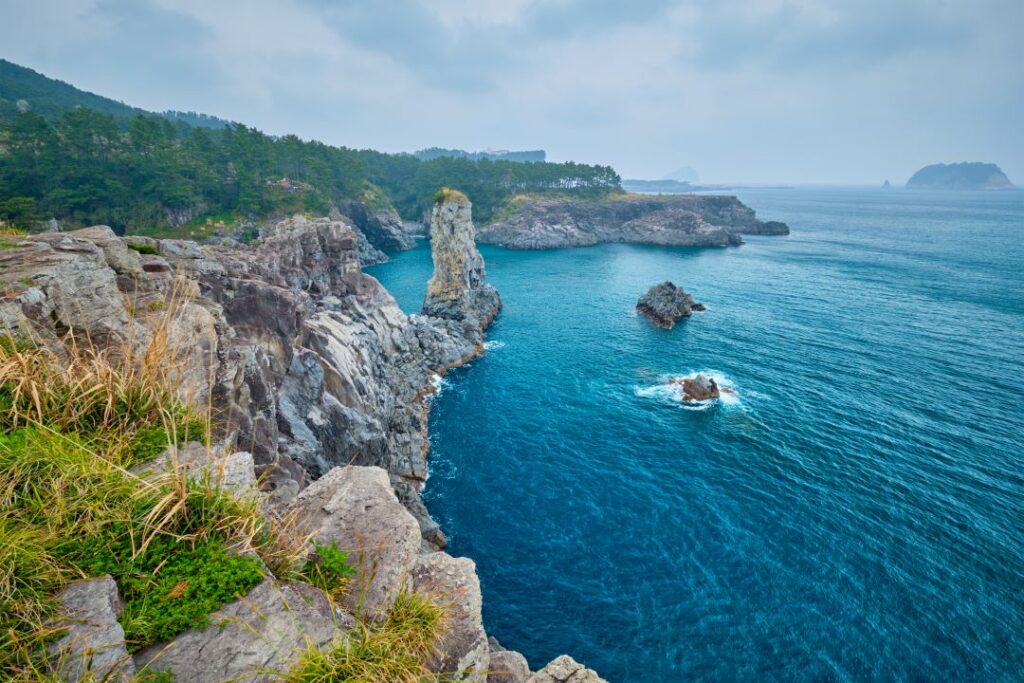
There are countless ways to enjoy your time on Jeju Island. Start by exploring the island’s natural wonders. Hiking Hallasan Mountain offers a rewarding challenge with its panoramic views. Seongsan Ilchulbong is perfect for an early morning hike to catch the sunrise. If you prefer a more relaxed pace, visit the island’s beautiful beaches like Hamdeok and Hyeopjae, where you can swim, sunbathe, and participate in various water activities.
For a cultural experience, visit the Jeju Folk Village Museum and learn about traditional Korean life. Explore the island’s many unique museums, such as the O’sulloc Tea Museum, which offers insights into Korea’s tea culture. Don’t miss the chance to sample Jeju’s famous black pork and fresh seafood at local restaurants.
Adventurous visitors can explore the Manjanggul Lava Tube, one of the longest lava tubes in the world. The Jeju Stone Park is another fascinating spot, showcasing the island’s geological history and traditional stone culture. Whether you’re hiking, relaxing on the beach, or exploring cultural sites, Jeju Island offers a rich and diverse experience.
Why is Jeju Island So Famous?
Jeju Island is famous for its stunning natural beauty, diverse attractions, and unique culture. Its volcanic landscapes, including Hallasan Mountain and Seongsan Ilchulbong, draw nature enthusiasts from around the world. The island’s beautiful beaches, cliffs, and lava tubes provide picturesque settings for relaxation and adventure.
Jeju’s cultural heritage is another reason for its fame. The island has a distinct local culture, evident in its traditional villages, unique cuisine, and festivals. Jeju’s designation as a UNESCO World Heritage site highlights its global significance. The island is also a popular honeymoon destination, known for its romantic scenery and tranquil atmosphere.
How Many Days Do You Need in Jeju Island?
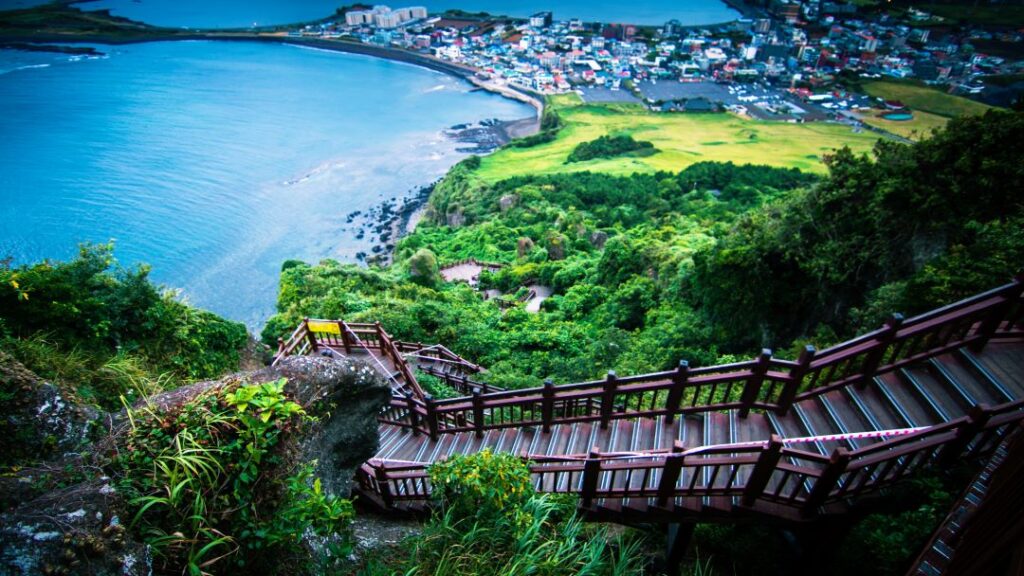
The ideal duration for a visit to Jeju Island depends on your interests and schedule. A 3 to 4-day trip is usually sufficient to see the main attractions. This timeframe allows you to hike Hallasan Mountain, visit Seongsan Ilchulbong for sunrise, relax on the beaches, and explore cultural sites like the Jeju Folk Village Museum.
If you have more time, a 5 to 7-day trip provides a more relaxed pace. You can delve deeper into the island’s natural and cultural offerings, visit more remote areas, and enjoy additional activities like horseback riding, visiting theme parks, or taking boat tours around the island. Jeju Island’s diverse attractions ensure that whether you stay for a few days or a week, you’ll have plenty to see and do.
Why is Jeju the Most Liveable Island?
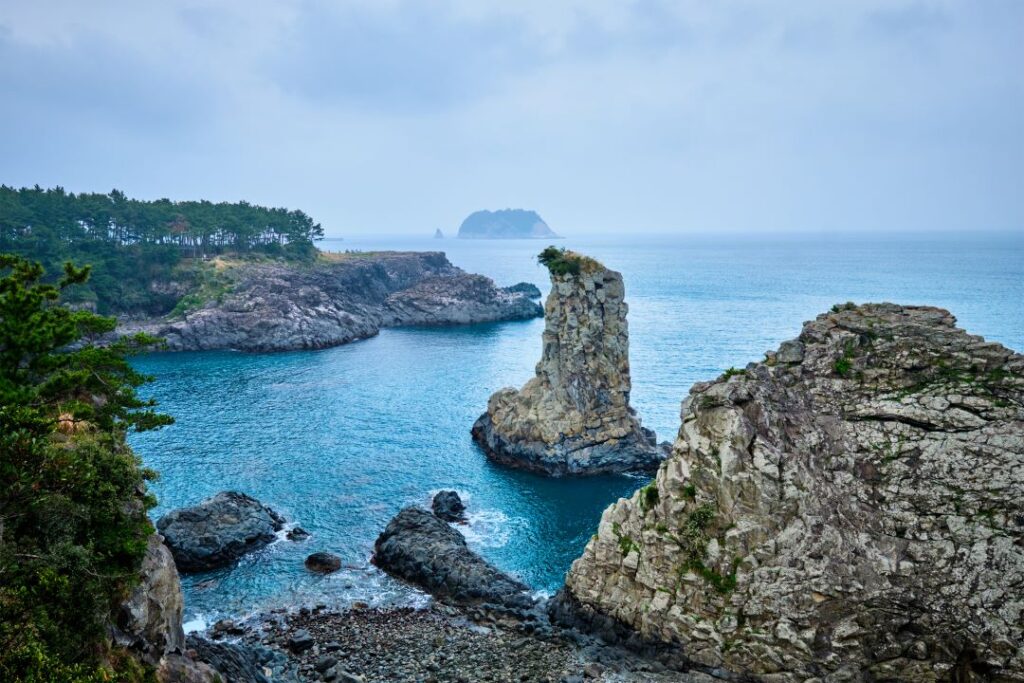
Jeju Island is often considered the most liveable island in South Korea due to its pleasant climate, beautiful scenery, and high quality of life. The island enjoys mild weather year-round, with warm summers and cool winters, making it comfortable for residents. The natural beauty, including beaches, mountains, and forests, provides a serene and picturesque living environment.
Jeju also offers a slower, more relaxed pace of life compared to the bustling cities on the mainland. The island’s clean air, abundant green spaces, and outdoor activities contribute to a healthy lifestyle. Additionally, Jeju has modern amenities, good healthcare, and educational facilities, making it a convenient place to live.
Why Must You Visit Jeju Island?
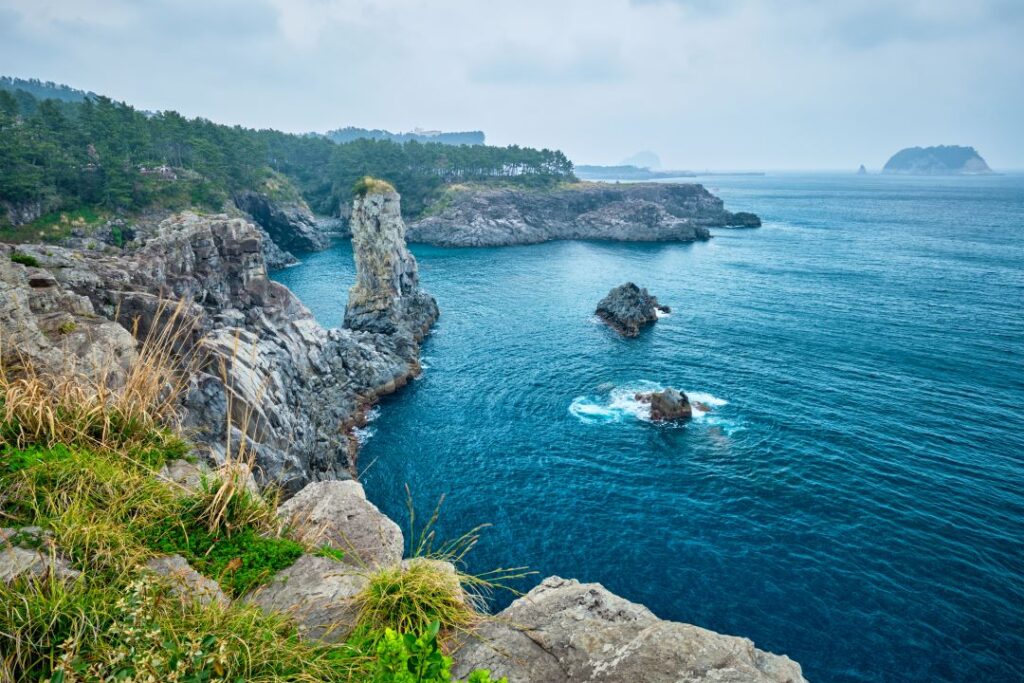
Visiting Jeju Island offers a unique experience that combines natural beauty, cultural richness, and recreational activities. The island’s volcanic landscapes, such as Hallasan Mountain and Seongsan Ilchulbong, provide stunning scenery and excellent hiking opportunities. Jeju’s beautiful beaches and coastal areas are perfect for relaxation and water sports.
Culturally, Jeju offers a glimpse into traditional Korean life with its folk villages, museums, and local festivals. The island’s cuisine, featuring dishes like black pork and fresh seafood, is another highlight for food lovers. The mild climate makes it a pleasant destination year-round, ensuring you can enjoy its attractions at any time.
Where is Jeju Island Located?
Jeju Island is located off the southern coast of South Korea, in the Korea Strait. It is the largest island in the country and lies about 130 kilometers from the mainland. The island is easily accessible by plane from major cities in South Korea, such as Seoul and Busan, with flights taking around an hour. There are also ferry services connecting Jeju to various ports on the mainland.
What is the Best Month to Visit Jeju Island?
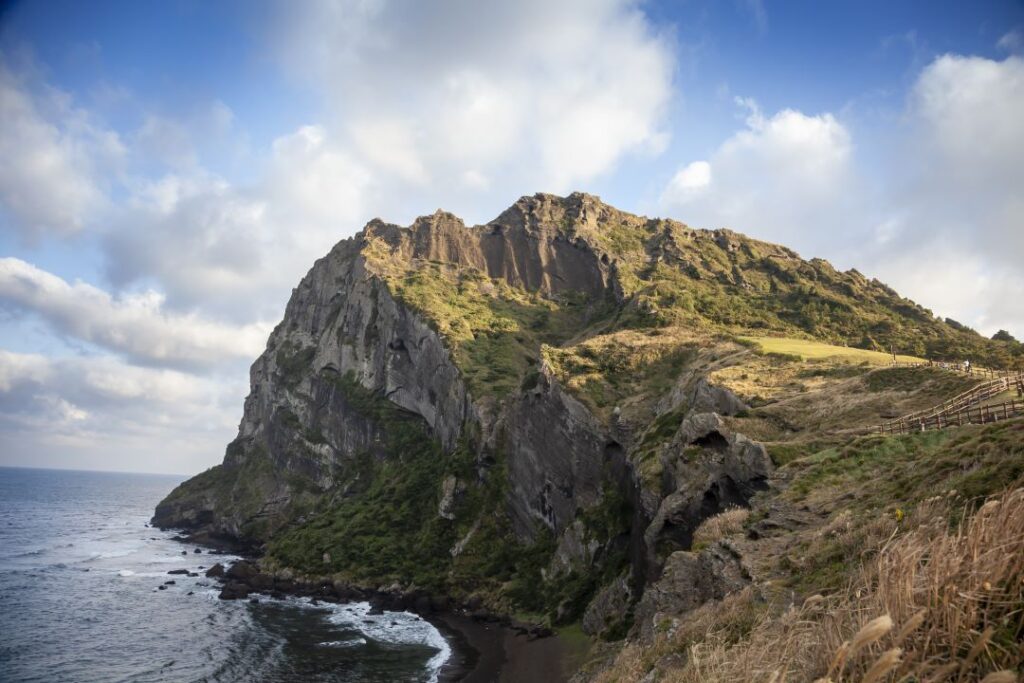
The best months to visit Jeju Island are typically April to June and September to November. During these periods, the weather is mild and pleasant, making outdoor activities enjoyable. Spring (April to June) brings blooming flowers and fresh greenery, while autumn (September to November) offers cool temperatures and colorful foliage.
Summer (July to August) is warm and ideal for beach activities, though it can be crowded due to the peak tourist season. Winter (December to February) is colder but still mild compared to the mainland, and it’s a good time for those who prefer fewer crowds and enjoy winter scenery.
What Can I Do in Jeju Island?
There are many activities to enjoy on Jeju Island. Nature lovers can hike Hallasan Mountain, explore the Manjanggul Lava Tube, and visit the Seongsan Ilchulbong crater. Beach enthusiasts can relax, swim, and participate in water sports at beaches like Hamdeok and Hyeopjae.
For cultural experiences, visit the Jeju Folk Village Museum and explore local markets. The island also offers unique museums, such as the O’sulloc Tea Museum and the Jeju Stone Park. Adventure seekers can try activities like horseback riding, zip-lining, and scuba diving.
Is Jeju Island Worth Visiting?
Absolutely, Jeju Island is worth visiting. Its diverse attractions cater to a wide range of interests, from stunning natural landscapes and outdoor activities to cultural experiences and delicious cuisine. The island’s mild climate makes it a pleasant destination year-round, and its unique charm and beauty offer a memorable travel experience.
Conclusion
Jeju Island, with its mix of natural wonders and cultural treasures, is a must-visit destination in South Korea. Whether you’re an adventurer, a beach lover, or a cultural enthusiast, Jeju offers something for everyone. From hiking Hallasan Mountain and watching the sunrise at Seongsan Ilchulbong to exploring traditional villages and enjoying local cuisine, Jeju Island promises a rich and diverse experience. Its mild climate, beautiful scenery, and welcoming atmosphere make it a perfect getaway any time of the year.

